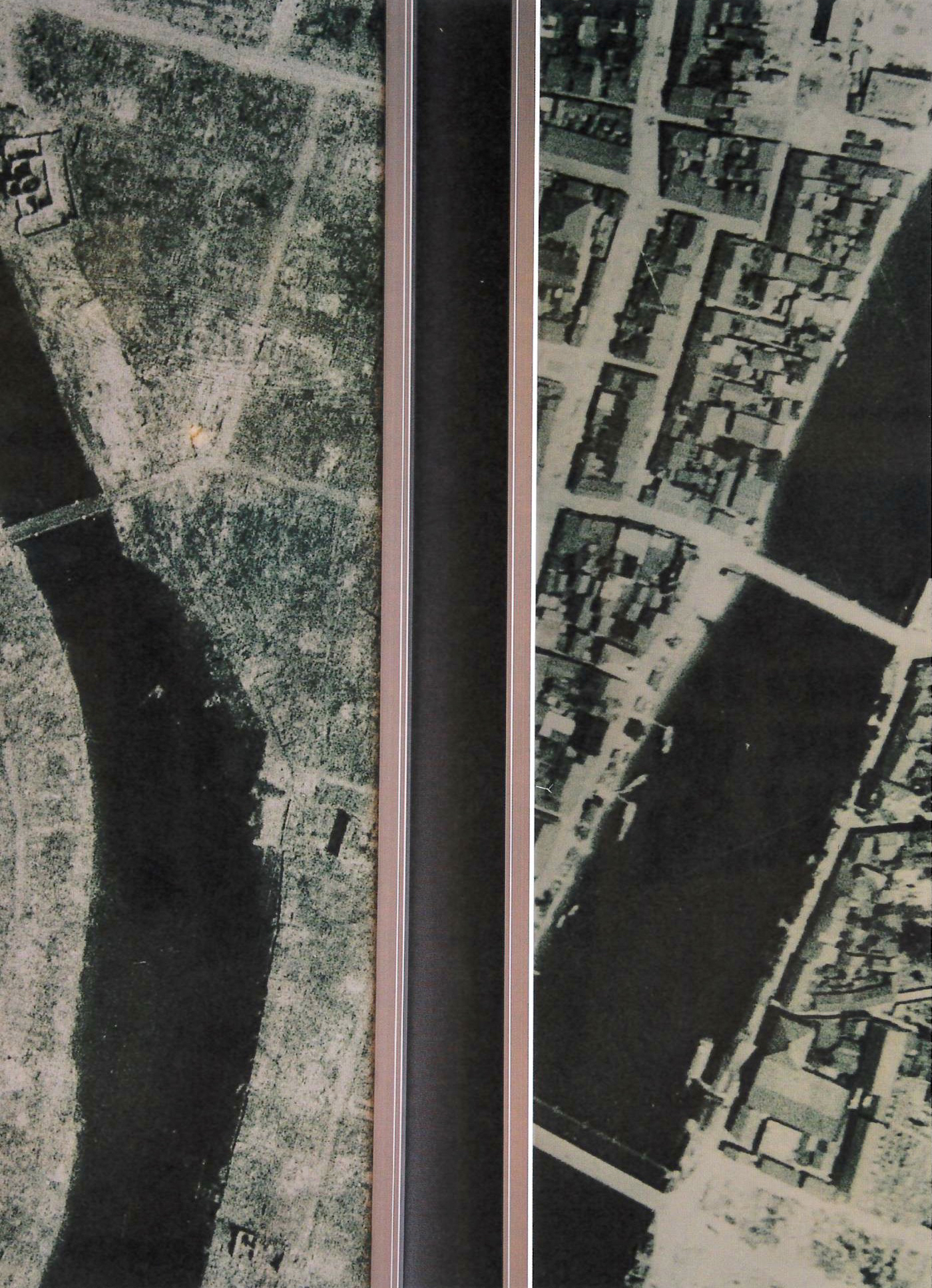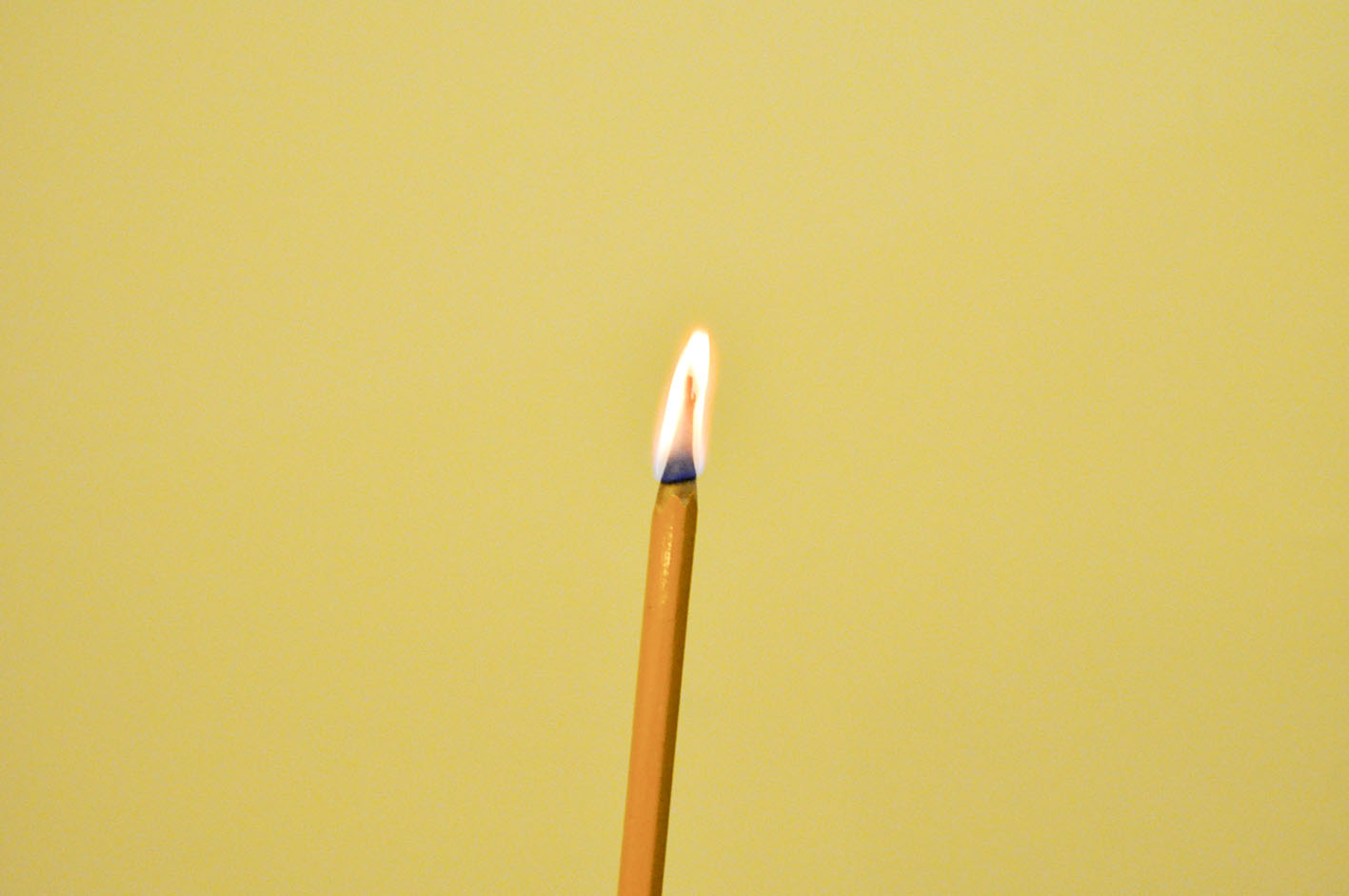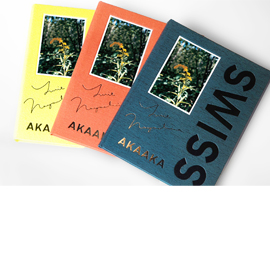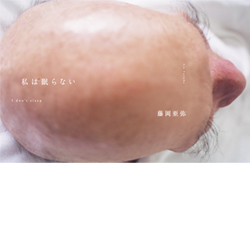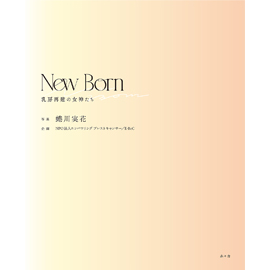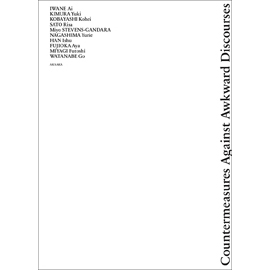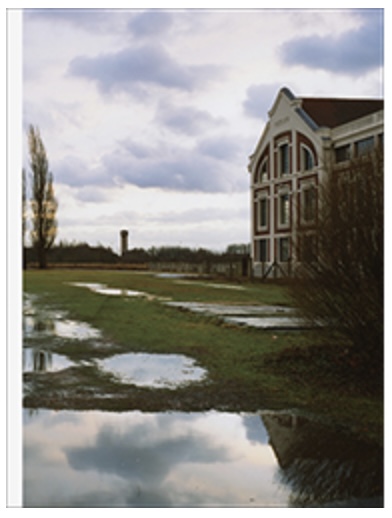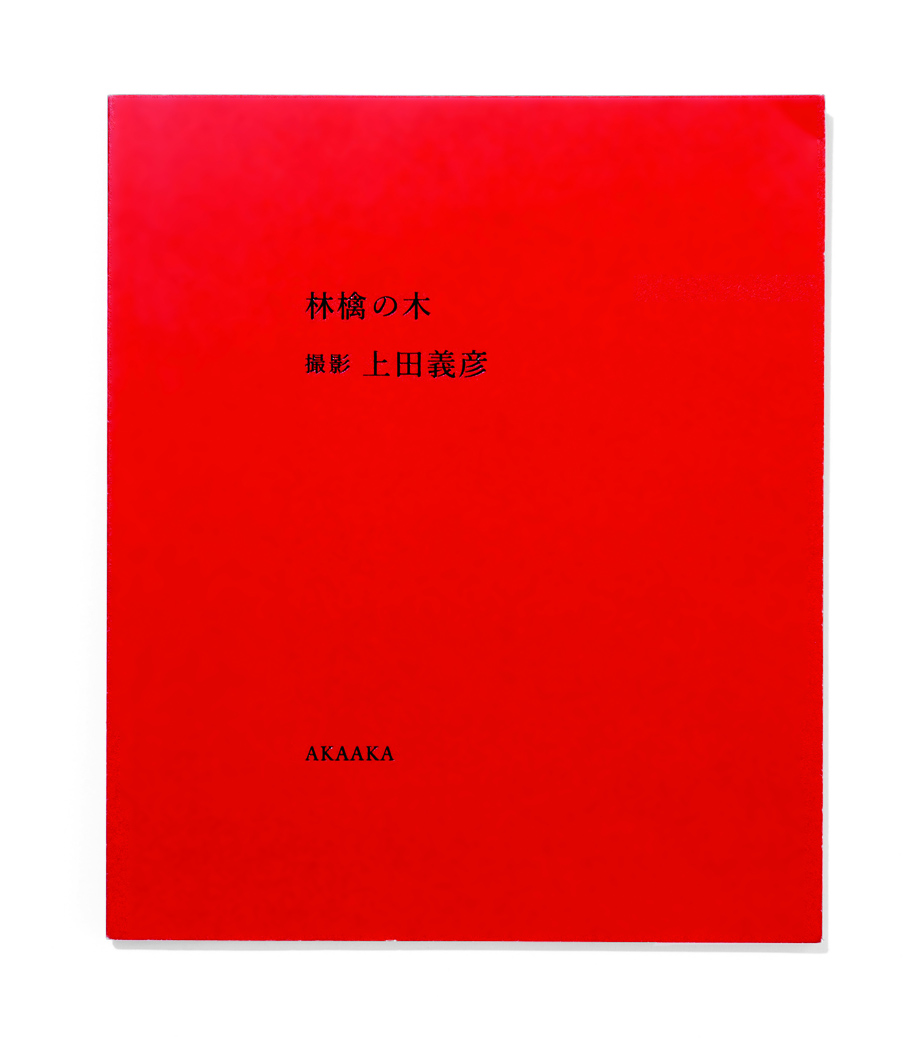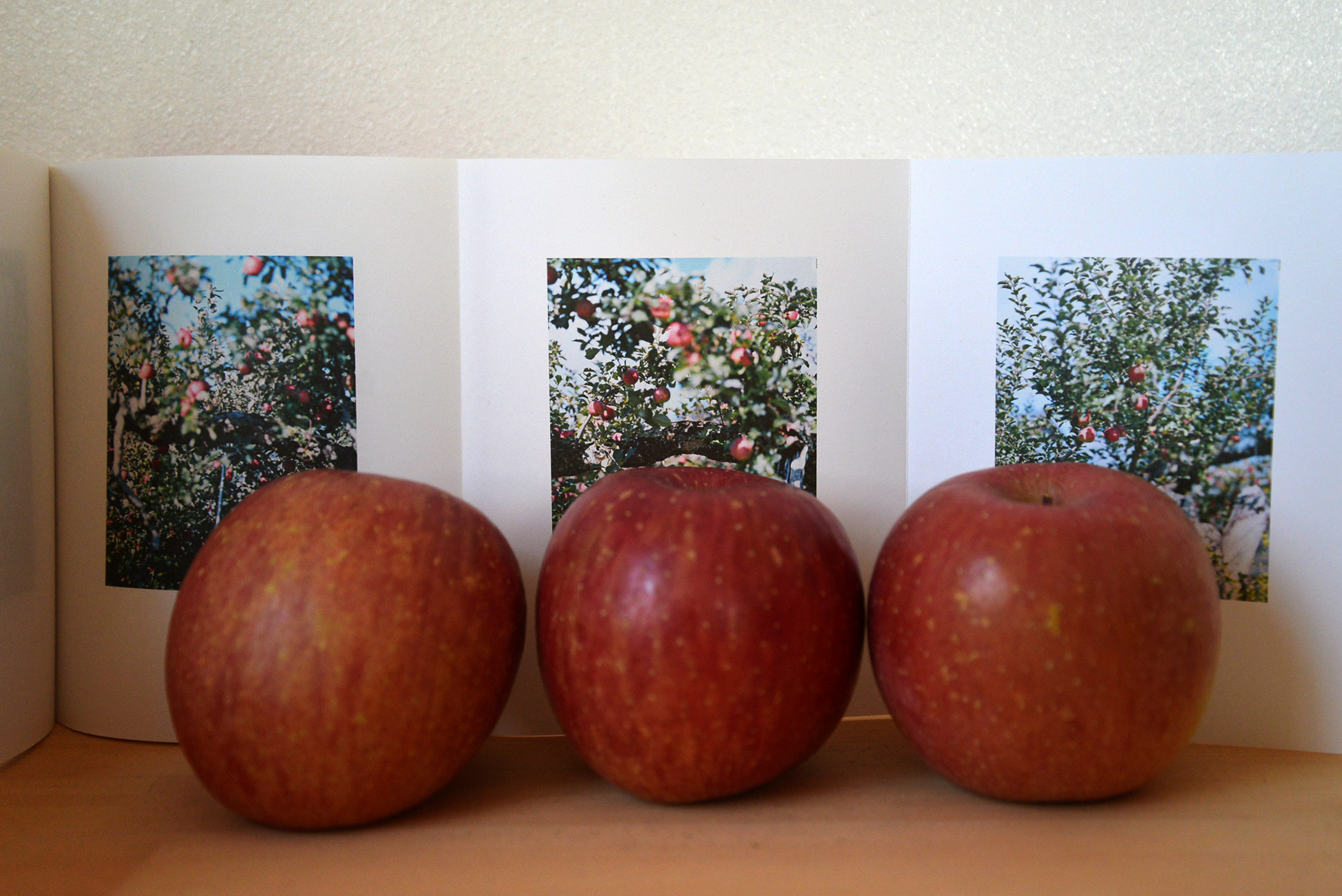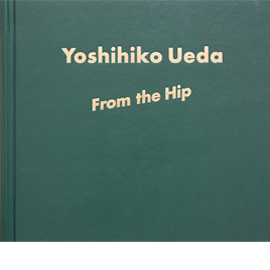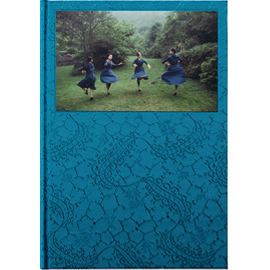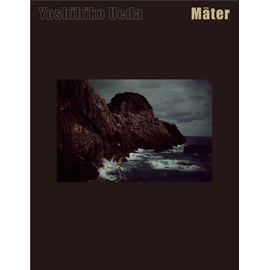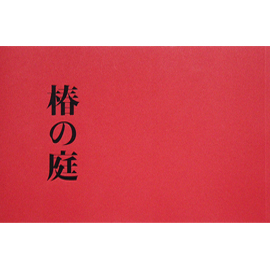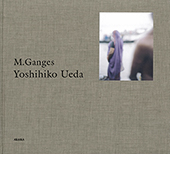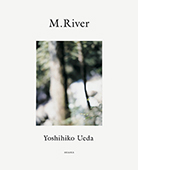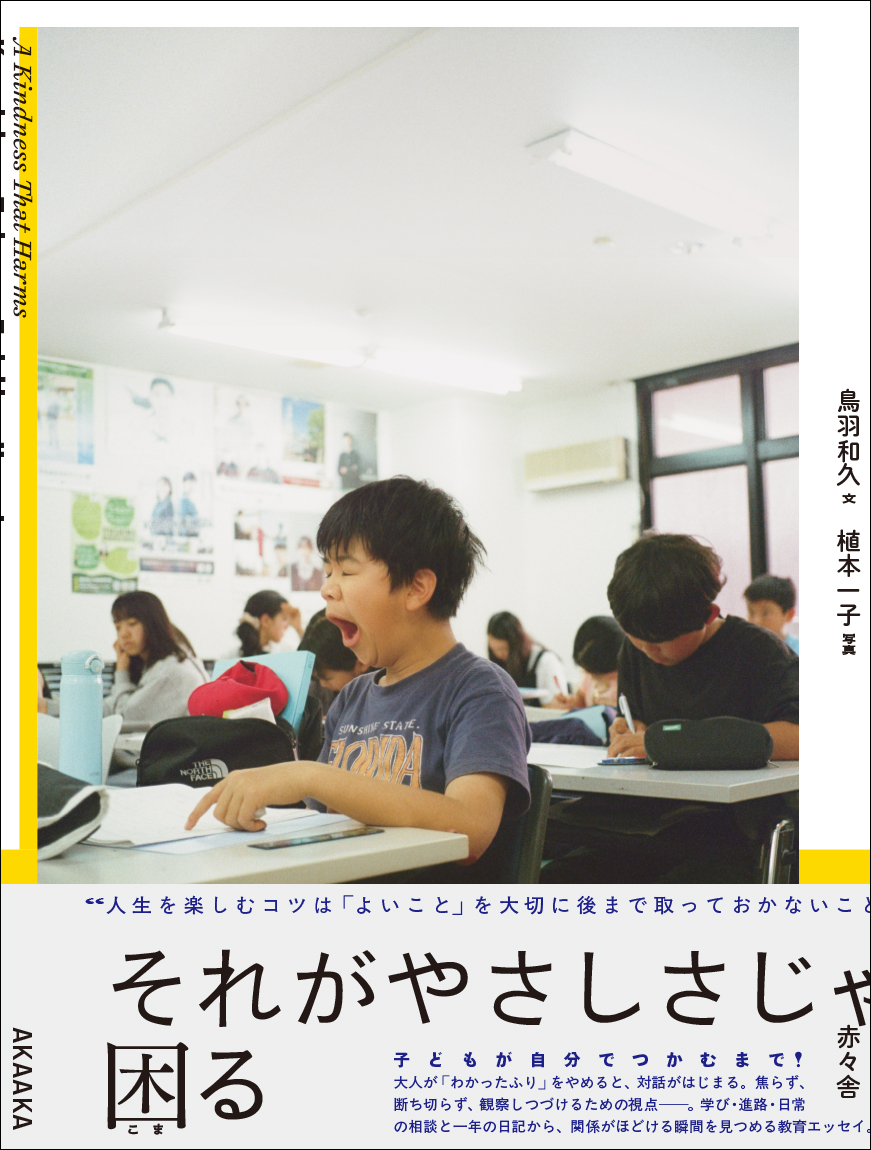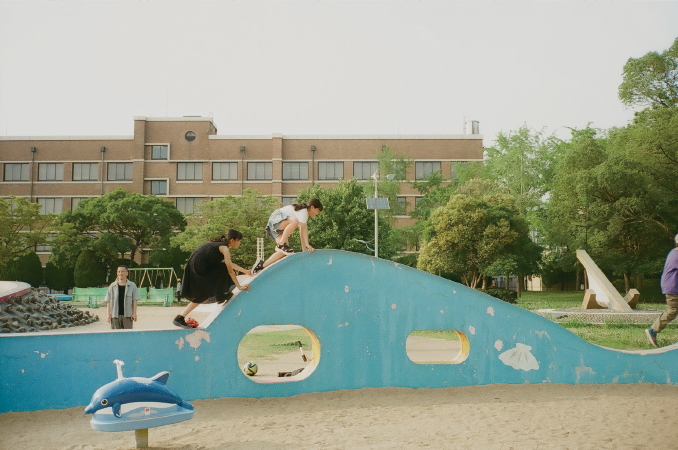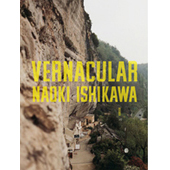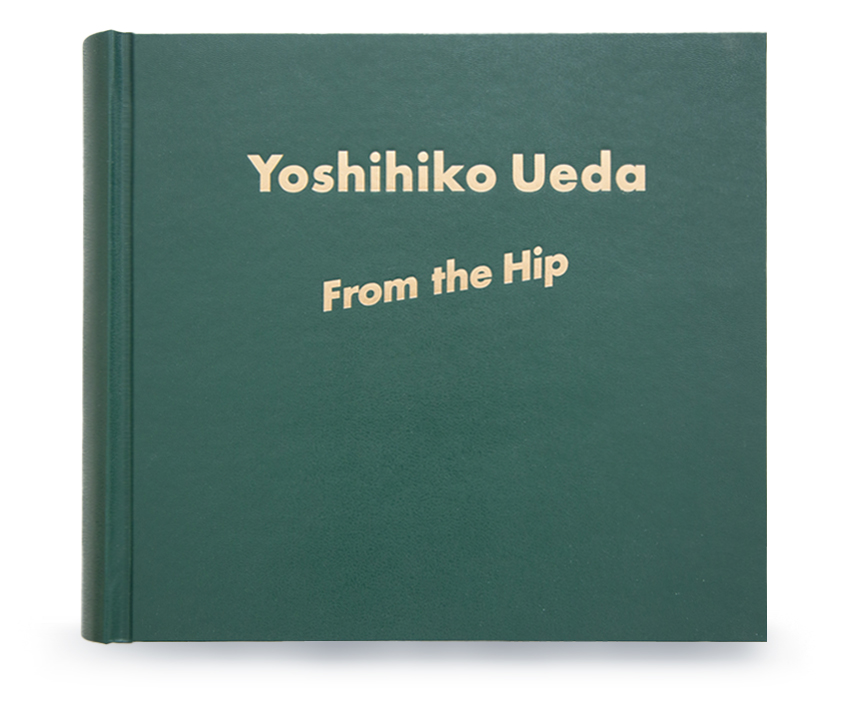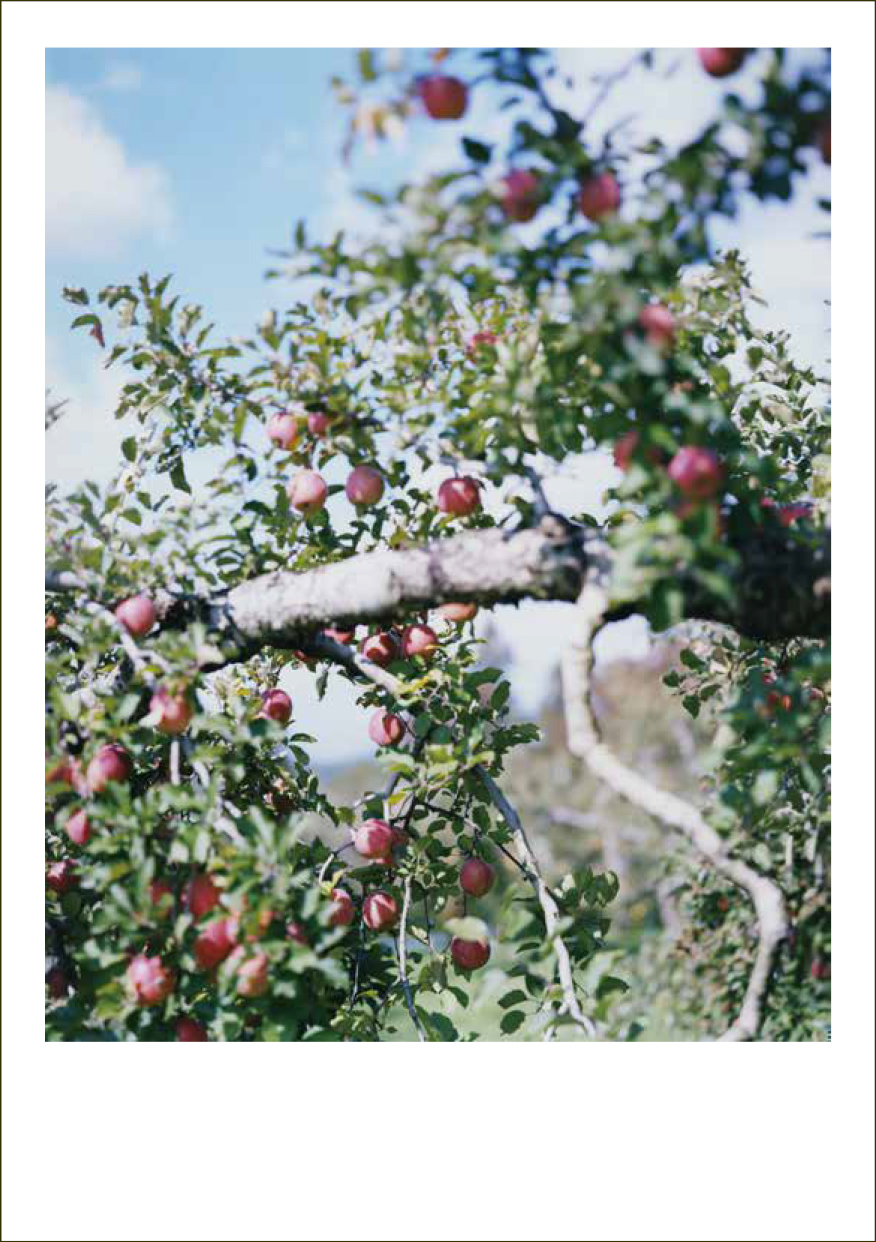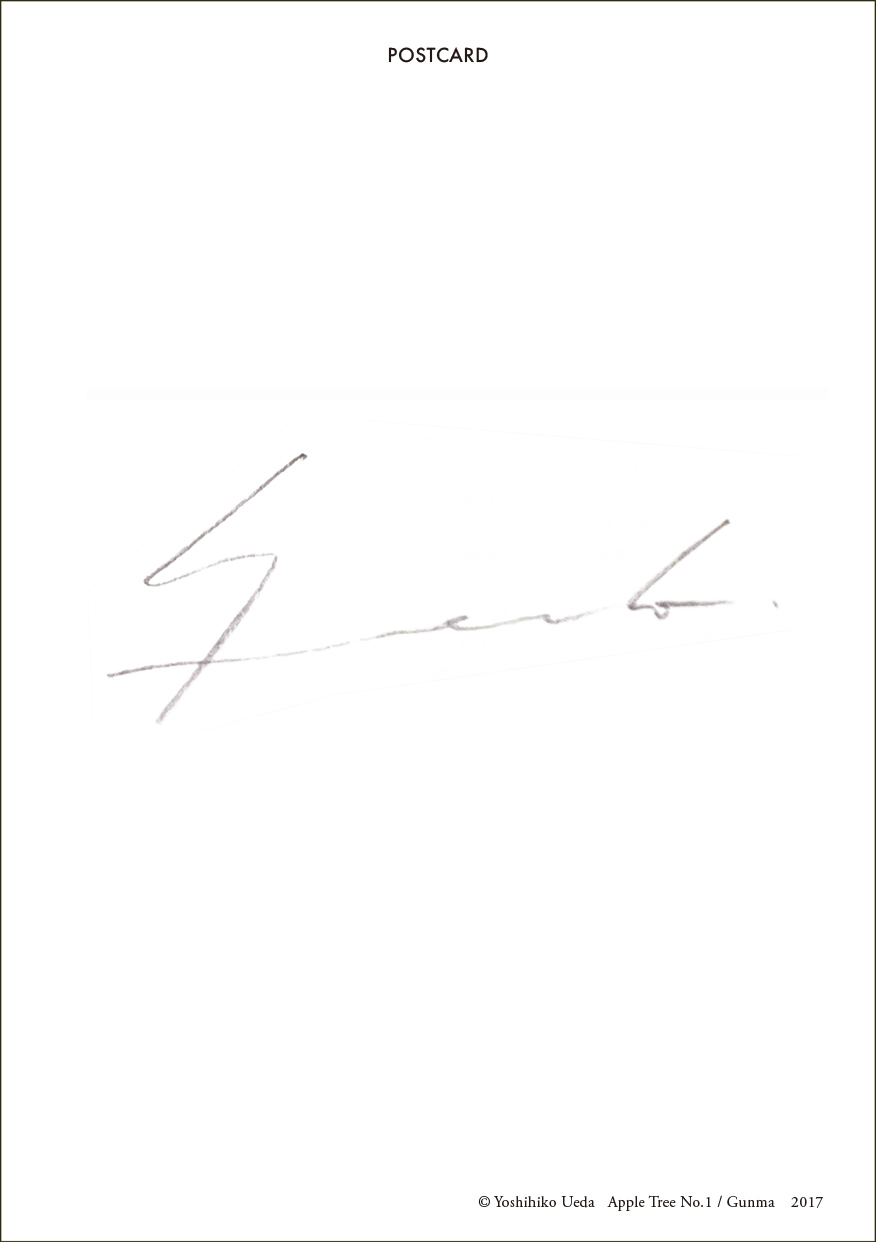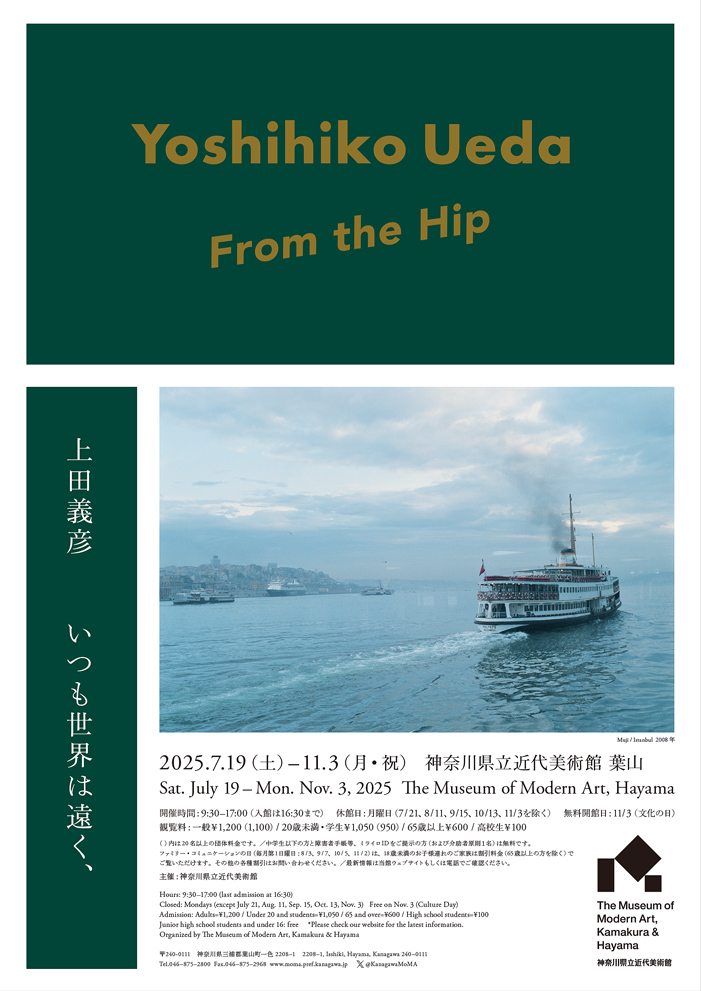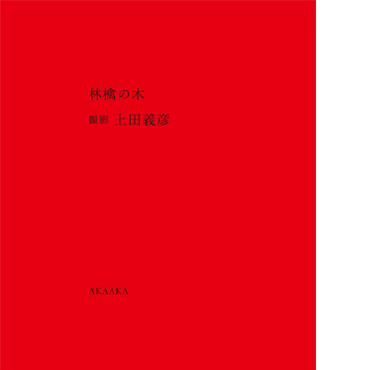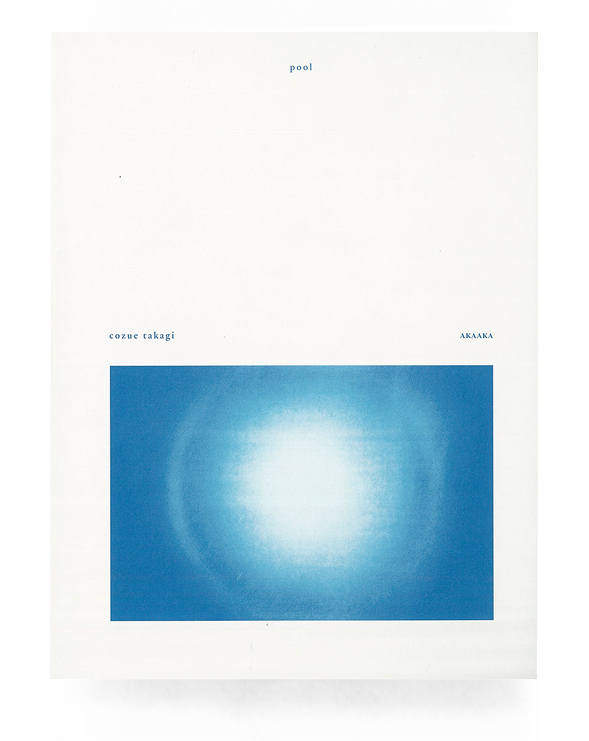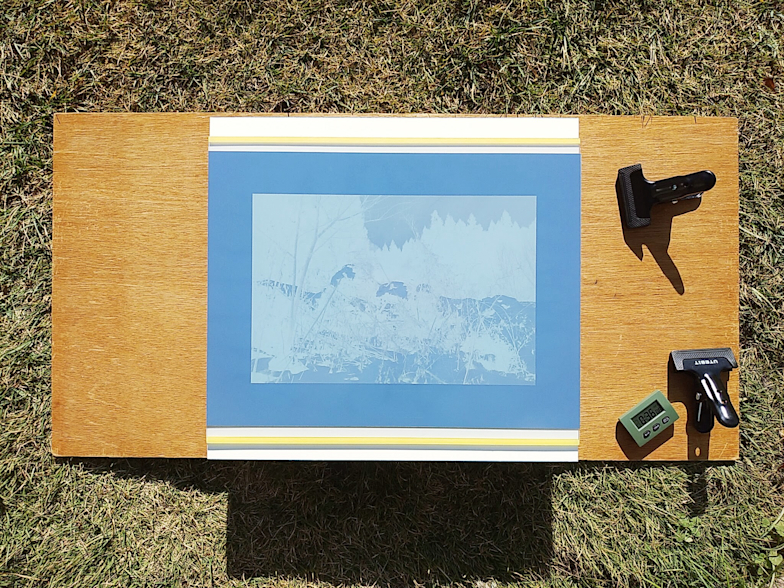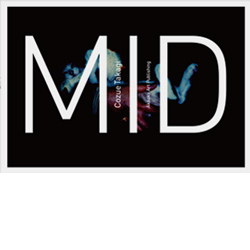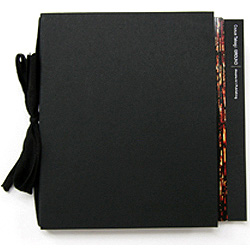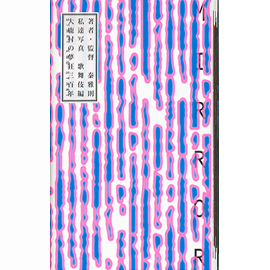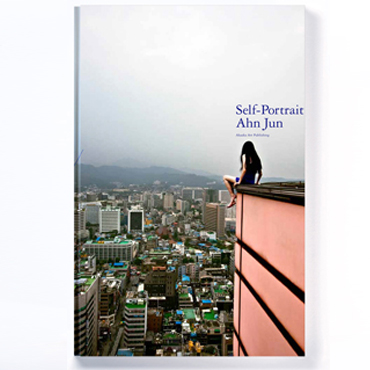上田義彦『いつも世界は遠く、』
Book Design:葛西薫
発行:赤々舎
Size: H188mm × W210mm
Page:768 pages
Binding:Hardcover
Published in July 2025
ISBN:978-4-86541-198-0
|
¥ 7,000+tax
国内送料無料!
お支払い方法は、銀行振込、郵便振替、
クレジットカード支払い、PayPal、PayPay よりお選び頂けます。
予約商品: 9月19日頃 発送開始予定
Pre-order: Ship on September 19, 2025
|
About Book
From the Hip ── 上田義彦 40年の軌跡
本書は、上田義彦の代表作から未発表の初期作品、最新作まで、自ら現像とプリントを手がけた約580点を収録し、768ページにわたりその40年の軌跡を現すものです。
森や家族、河、建物、標本、紙、林檎の木、ポートレート。アートや広告といった枠組にとらわれることなく、上田の一貫して真摯で鋭い眼差しは、世界に存在するさまざまなモチーフを最高の瞬間として捉え、観るものを魅了してきました。自身を取り巻く世界の機微を敏感に察知し、対象への想いを一瞬のシャッターに込める── 「From the Hip」(英題)が象徴する、直感に裏打ちされ、偶然と必然が交差する瞬間に写し撮られた写真は、遥かな時の流れの中の切り取られた一瞬として、見る者の記憶や感情と響きあってきました。
本書の構成は、通常のレトロスペクティブの趣と異なり、一度シリーズとして発表された代表作品を撮影年順に解きほぐし、さらに上田自身の手で最新作から時系列を逆にたどるかたちで編まれました。それは上田の写真がいつも新鮮に立ち現れ、各シリーズをもう一度遥かな時間へと開いていくことを体現するものです。写真を全方位に開いていくありようのなかで、「いつも世界は遠く、」という響きは、上田の写真の魅力のひとつでもあり、写真に本質的に伴う「距離」を浮かび上がらせます。
約20年間にわたり撮影された、サントリー烏龍茶の広告写真と中国の記録「いつでも夢を」には、上田が風景と向き合うたびに感じたという「遠さ」「遥か感」が漂います。カメラという媒体が持つ特性により、懐かしさと普遍性が加わった唯一無二の写真であり、長年の時間をかけて洗練された、被写体との理想的な距離感と、全体に行き渡る空気感が美しく融合しています。ポートレート写真もまた、上田の重要な領域です。広告写真としても多く目にする、美しく構成された背景の中に人物が慎重に配された作品から、フレームに収まりきらない接写まで、親密さと緊張感が交錯する「近くて遠い」距離感が現れています。母・源を意味する「Māter」、被写体の輪郭を溶かすように焦点がぼかされた「M.Ganges」「M.river」、太古の森を歩き、生命の大元と対峙するように写された「Quinault」「Materia」などの作品は、はるか彼方の時間に眠るものを表出しようとする試みでした。家族の写真から13年間にわたる記録を厳選し、妻の日記の文章が添えられた「At Home」、そして、最初期作品である学生時代の卒業制作── いずれのシリーズにおいても、上田の作品に刻まれたこれらの光の痕跡は、物理的、心理的・時間的「距離」を越えてやって来たものであり、節度や抑制とともに、そこに憧憬、希求を静かに呼び起こします。
また、旅の途上で上田が綴った未公開の日記やメモが初収録されていることも、本書の大きな魅力です。光や影、見ることの歓びについて書かれた言葉の数々は、写真の秘密へと触れようとする思索の断片として、もうひとつの軌跡を形づくっています。
上田は、自作について語るとき「奇跡」という言葉をよく使います。それは、写真という不可思議な営みが、自身の意図や行為だけで完結するものではなく、自分の外側にある要素──おそらく写真そのものが持つ偶然性や一回性、そして「距離」に大きく左右されることを知っているからかもしれません。
『いつも世界は遠く、』は、流れる時間を心から愛し慈しみ、今もなお、その遠さの向こうに世界を愛おしく見つめ続ける、上田義彦の眼差しの「旅」と言えるでしょう。四十年の写真の軌跡は、私たちの時間と静かに響き合い、世界との出会いをあたらしくひらいてゆきます。
"写真本来の能力は、もともと全方位に開かれているのだと思う。しかし、それを使う人、撮る人の考え方や目的や意図の力が強く働けば働くほど、その能力は限られた方向にしか開かれないのだと思う。だから僕は、写真の前でもっともっと自由で野放図に、己の眼を開いて世界を受け入れていければと願っている。"(p.5 手帳より)
"旅の記憶として鮮明に立ち上がってくるのは、不思議なことだが、写真に撮れなかったことかもしれない。写真に残せなかったこと、撮ることができなかったことを、自動的に、記憶として網膜に焼きつけ頭に残しているのだろう。旅のほとんどは、遙か彼方にぼんやりとして霞み、しだいに消失してゆく。どれほど美しい景色だったのか、どれほど過酷だったのか、自分の記憶を人に充分に伝える事はむずかしい。しかし写真は、それを見れば、いつでも鮮明にその時間が蘇る。だから、それを可能にしてくれる不思議な装置、カメラとともに旅をする。"(p.244より )
寄稿:「断念と憧憬―上⽥義彦の旅」 清⽔ 穣「上田義彦の『遠さ』について:遥かの写真を、隔たりの地で観るまえに」 髙嶋雄一郎
From the Hip
Yoshihiko Ueda
A photograph records a certain person on a certain day, at a certain time, in a certain place.
A few years later, or a few decades, it faithfully conveys to the viewer the moment in which it was taken, exactly as it was. The more casual, the more unplanned the photo, the more vividly it shows the situation at that moment,raw and unvarnished, even with the passing of time.
Why is this? To my mind, photographs have an innate capacity to be open in all directions.
But the more dominant the thought processes of the person using a photograph, or the person who took it, or the power of their purpose or intention, the more likely that capacity will only unfurl in a limited direction.
So when looking at a photo, I try to truly open my eyes and take in the world in a fashion more free, and unfettered. (p.5)
Bizarrely, what I remember most vividly about my travels,
may be the things I never got to photograph.
I suppose the fact that I was unable to leave something in a photo, unable to capture it,
is automatically etched on my eyeballs and in my mind.
Most of my travels fade into the mist of the past, and gradually disappear.
Transmitting one's personal memories adequately to people is difficult.
How beautiful a particular scene was, how harsh.
But the thing about photos is, all you need to do is look, and that moment comes flooding back as if it were yesterday.
Which is why I travel with a miraculous device that enables that very thing: the camera.(p.244)
Yoshihiko Ueda
--------------------------------------------------
In the early summer of 2025, the photographer, Yoshihiko Ueda, will present a retrospective solo exhibition covering the entirety of his photographic journey. The stage for the exhibition is an art museum located somewhat remotely in Hayama between the sea and mountains. The town blessed with an abundant natural setting is, in fact, where the photographer lives and the location that he chooses for portrait photography and filming.
In the process of fine-tuning the content of this solo exhibition, the photographer mentioned several times how much he liked the art museum and the exhibition space. As someone who works at the art museum, this made me feel a little awkward and so I had trouble processing what he said. But after repeatedly looking over the enormous number of his photographs and pondering over his writings, I'm beginning to feel as if his photographic works and his philosophy taught me what is meant by the "distance" of the art museum and the town it is located in. And I can say now, at the risk of sounding somewhat presumptuous, that this art museum is an absolutely suitable venue for taking a retrospective look at the photographer's representative works.
One reason I came to realize this was when the photographer told me he wanted to name the exhibition "Itsumo Sekai ha Tooku, (means "The World is Always Distant," in Japanese)" Initially, it seemed poetic, as if excerpted from a passage in his writings. It seemed to differ in tone from the titles given to the large number of photobooks and exhibitions he had presented in the past. I also sensed a somewhat somber undertone in the word "distance." Now, however, it seems to me that this word is likely pointing to beliefs expressed in his photographs and the true nature of photography that deserve our renewed consideration.
On reflection, photographs are always accompanied by "distance." It is fair to say that it is this distance itself that establish- es photography as a form of expression. Unlike the artist who places paint on the canvas with a brush or the sculptor who carves wood with a chisel, direct physical interaction with the work is not an absolute requirement for artistic expression by the photographer. Distance always exists between the lens and the film, the subject and the camera (the photographer)--it is the structure of this form of expression that cannot be breached. The photograph is the trace that appears left by light that crosses the distance to shine on the photographic film the instant the photographer releases the shutter. [...]
Let me add here that "distance" in this photographer's works serves to create space that arouses emotions of aspiration and longing but also moderation and restraint in us. An example is the sense of being "far away" that he says rose to mind whenever he was confronted with landscapes in China during the twenty years beginning in 1990 when he worked on commercial photography (1990-2011, pp.571 etc) for Suntory oolong tea. Those scenes, perfected in unique photographs that take on a touch of nostalgia and universality made possible by the inherent nature of the camera as a medium, ideal distance in relation to the subject that the photographer refined over time, and the pervading atmosphere all finely integrated are a beautiful example.
The numerous portrait photographs are another remarkable part of the photographer's work. These include a large number of photographs, often seen in his advertising photography, in which persons are carefully positioned within aesthetically refined compositions and backgrounds. But there are also close-up portraits in his photograph collection Por- trait (1999-2002, pp.422-427, 446-451) and photographs of well-known persons taken in his early period (pp.643-656, 666-669, 674-677) in which the face does not entirely fit in the frame. These portraits, rather than conveying intimacy, are permeated with a sense of tension-they are close up and yet far away. [...]
I also recall a different approach to "distance" in addition to what is described above, in the series, Mäter and Study (2021, pp.43-63), in which the focus is blurred as if to dissolve the contour of the subject. The title given to the series means mother or source in Latin and the subjects chosen are such things as the sea, rivers, and the nude human body. It is an exploratory effort that diverges from his earlier works, Quinault (1991, pp.585-596)-photographs of a sacred rainforest in the entirety of its awesomely subtle shades of color and Materia (2011, pp.219-229), both of which also explore the origins of life. Ueda has presented many photographs that are focused throughout the entire image almost to the point of deep focus. However, he says that he chose to photograph this series in shallow focus with the intention of expressing landscapes in memory that sleep far beyond by blurring the reality that meets the eye. What is attempted here is a transcendence of the physical distance from the subject in front of the eye to instead reveal the psychological and temporal distance the farthest limit of what is possible for photographic expression. But the colors and tonal gradation in the photographs are even softer a delicacy that carries on and further develops Pictorialism for the contemporary age is indicative of the photographer's deep interest in the history of photography.
There is one photobook created by Ueda (and his family) that has a sense of distance unlike in any other of his works. At Home (1993-2008, pp.309-313, 370-373, 399-409, 432-441, 505-509) is a collection of photographs carefully selected from among thousands taken of his family over a period of 13 years, assembled with text from his wife's diary woven in.
This collection is distinct from his other works because these were private photographs that had not previously been made public and also because many were taken not with a large format camera but with 35 mm film cameras such as the Ricoh GRI and a Leica M4 that was a present from his wife. [...]
Ueda often uses the word "miracle" when speaking of his works simply from his awareness that perfection of the expressive medium that is the photograph is not achieved solely by his intentions and actions alone, but is also largely influenced by factors "outside" of himself. The spontaneity and singularity inherent to the photograph itself and perhaps also the "distance" it possesses may account for this in part. [...]
Yes, "From the Hip," and what follows are more than six hundred photographs chosen with great care for inclusion in the photobook. Or the seaside museum where they are displayed. I sincerely hope that many people will come to enjoy this quiet town within its beautiful natural surroundings together with the landscapes and scenes that photographer Yoshihiko Ueda has gazed on from a distance.
Excerpts from the text "On Yoshihiko Ueda's "Distance":
Before Viewing Photographs of What is Far Away from Places of Distance"
Yuichiroh Takashima(Chief Curator, The Museum of Modern Art, Kamakura & Hayama)
Special gift for the first customers
小社HP先着ご購入者さまに、直筆サイン入り ポストカード(サイズ:H208mm × W148mm)を、特典としてお付けしてお届け致します。先着300枚限定、無くなり次第終了とさせて頂きます。
(※赤々舎もう一冊、りんご通信など、その他の特典は付きません)
One signed postcard will be given away as a Special gifts for the first customers.The offer will end while supplies last.
